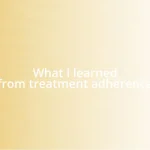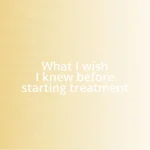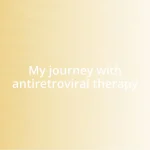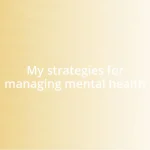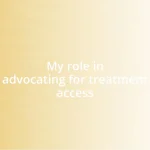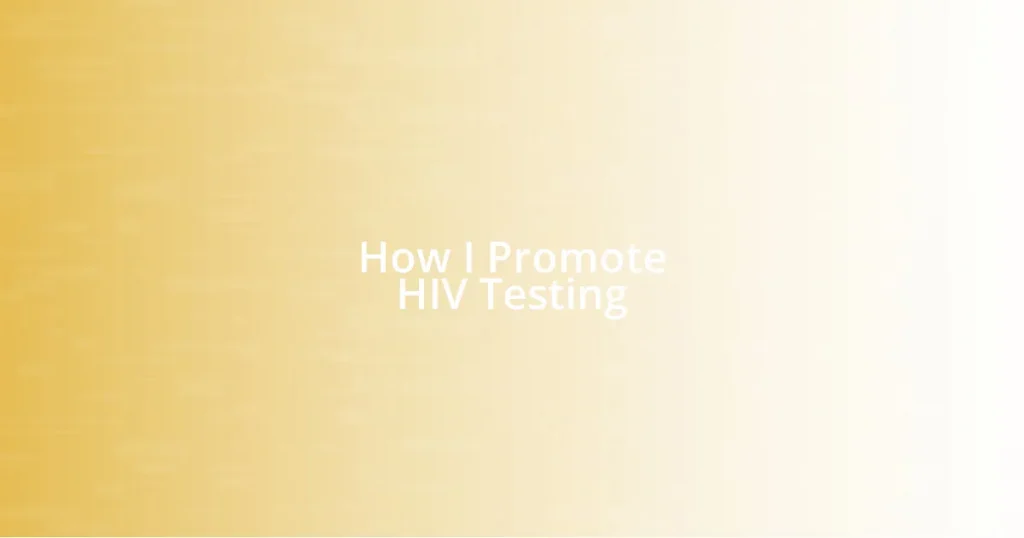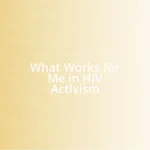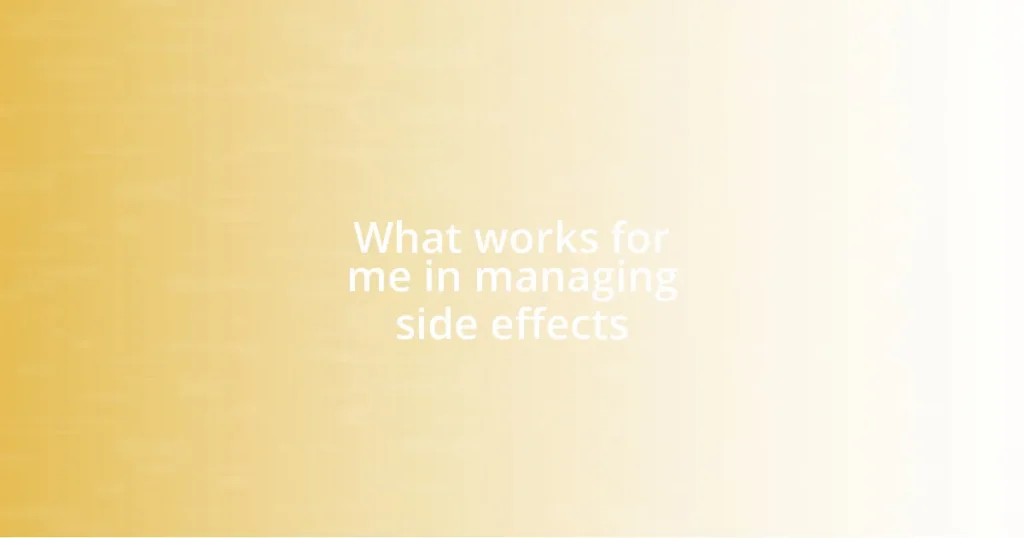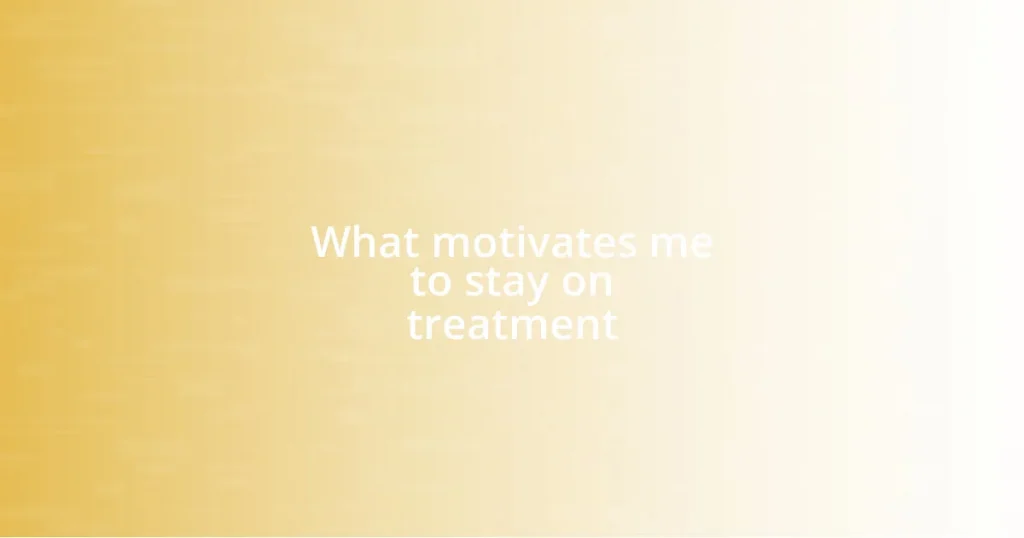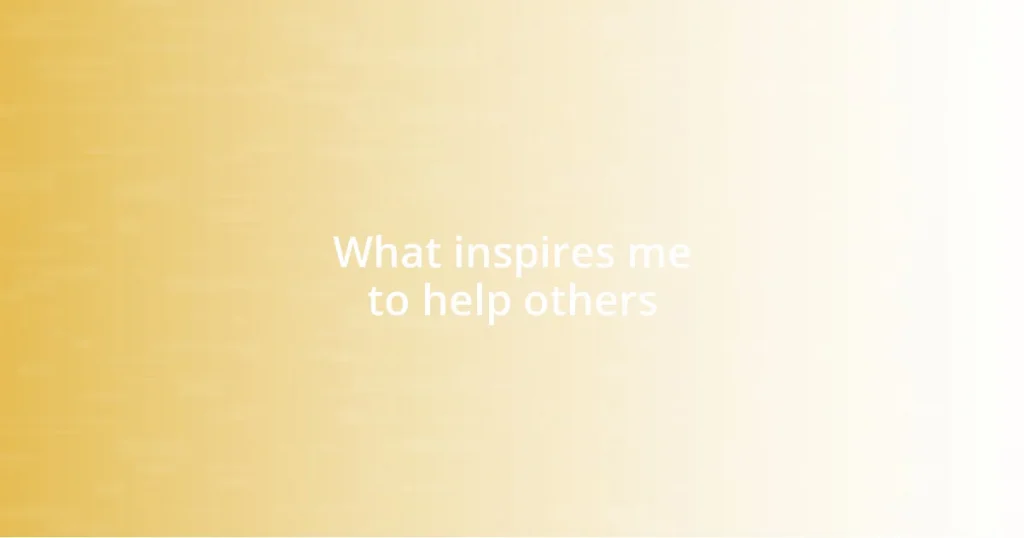Key takeaways:
- Identifying target audiences, including young adults and marginalized communities, is crucial for promoting HIV testing effectively.
- Developing emotional and relatable communication strategies, such as storytelling and community engagement, enhances connection and encourages testing.
- Leveraging social media platforms like Instagram, TikTok, and Facebook fosters community dialogue and increases outreach effectiveness.
- Collaborating with local health organizations and creating interactive educational materials builds trust and reduces stigma around HIV testing.

Identifying target audiences for promotion
When I think about identifying target audiences for promoting HIV testing, I can’t help but recall my first awareness campaign. We focused on young adults, a group that often feels invincible and may underestimate their risk. It made me wonder—how can we better frame our message to reach them effectively?
It’s crucial to consider different demographics, such as age, gender, and socio-economic status, as each group has unique needs and concerns. For instance, I’ve found that targeting LGBTQ+ communities requires a more nuanced approach, one that respects their experiences while also motivating them to seek testing. What emotions tie into their experiences, and how can we connect on that level to promote health-seeking behavior?
Another audience that often slips under the radar is those in marginalized communities. From my experience, these groups may experience stigma or lack of access to healthcare, which makes direct outreach incredibly valuable. How can we break down these barriers while fostering trust? It’s a real challenge, but knowing your audience is foundational to making a meaningful impact.

Developing effective communication strategies
When developing effective communication strategies for promoting HIV testing, I’ve learned that tailoring the message to resonate emotionally with the audience is key. For example, during a campaign I was part of, we invited individuals who had lived experiences with HIV to share their stories. Watching how their vulnerability inspired others was eye-opening; it demonstrated the power of authentic connection. People are more likely to engage when they feel a personal touch in the messaging.
Here are some strategies that I’ve found helpful:
- Use relatable language: Avoid medical jargon; instead, opt for simple, clear terms that everyone can understand.
- Leverage social media: Platforms like Instagram or TikTok can be effective for reaching younger audiences with dynamic content.
- Incorporate storytelling: Share real-life experiences and testimonials that connect emotionally, making the issue more relatable.
- Create visual content: Infographics or videos can communicate essential information quickly and memorably.
- Engage community leaders: They can help amplify your message and lend credibility, helping to build trust within target demographics.
Each of these strategies can transform a basic message about HIV testing into a call to action that feels personal and engaging.

Utilizing social media for outreach
Utilizing social media for outreach opens up a world of opportunities that I’ve seen firsthand. One campaign I spearheaded involved using Instagram Stories to share quick HIV facts along with engaging polls. It was fascinating to watch how this interactive approach encouraged followers to not only learn about HIV testing but also share that knowledge with their friends. I realized that when we create dialogue, rather than broadcast information, we foster a sense of community.
In my experience, platforms like TikTok can be incredibly powerful in reaching younger audiences. I once collaborated with a local influencer who created fun, relatable content that humorously showcased the importance of regular testing. The result? A noticeable uptick in inquiries about testing locations in our area. By leveraging the platform’s engaging format, I saw how effective it could be to meet people where they are, quite literally, scrolling through their feeds.
I often think about how social media can break down barriers and foster connections. For instance, during a Facebook Live event, I facilitated a Q&A session where audience members felt safe to ask their most pressing questions about HIV testing. Sharing my own experiences as a health advocate revealed my vulnerabilities and encouraged others to do the same. This openness created an environment where people felt empowered to seek testing and support without stigma.
| Platform | Engagement Strategy |
|---|---|
| Use interactive Stories for polls and quick facts | |
| TikTok | Collaborate with influencers for engaging content |
| Host live Q&A sessions to address audience concerns |

Collaborating with local health organizations
Collaborating with local health organizations has been one of the most enriching experiences in my journey of promoting HIV testing. For instance, I partnered with a nearby clinic that focuses on comprehensive sexual health services. Together, we organized free testing days that not only provided essential services but also emphasized community support. It was heartwarming to see individuals come together, sharing laughter and stories, while also prioritizing their health.
I distinctly remember walking into one of our joint events where a local health organization had set up a booth. They brought in knowledgeable staff who could answer questions and provide resources. I personally witnessed a young woman approach the booth with a mix of curiosity and apprehension. After a few minutes of conversation, she left feeling empowered about getting tested. Moments like these remind me of the immense impact that well-coordinated efforts can have on people’s willingness to engage with their health.
Moreover, collaborating with these organizations has allowed me to tap into their established networks. I often think about how crucial it is to build bridges within the community. When we set up joint outreach programs, the combined resources and expertise create a ripple effect. There’s something beautiful about working together toward a common goal—trust is built, and the stigma surrounding testing starts to diminish. How can we encourage more of these partnerships? I believe that the key lies in genuine relationships cultivated over time, ensuring that everyone feels invested in the cause.

Creating engaging educational materials
Creating engaging educational materials is all about making the complex feel relatable and accessible. For instance, when I was designing brochures for a community health fair, I chose a storytelling approach. Instead of just listing statistics, I created a fictional character who navigated the process of getting tested. By drawing readers into a narrative, I found they felt more connected and encouraged to explore the content. Hasn’t storytelling always resonated deeply with us?
Visuals play a pivotal role in educational materials too. I still remember how I used infographics to break down the HIV testing process step-by-step for an online campaign. The clarity those visuals provided sparked conversations among my peers. They appreciated how the colors and icons made the information digestible. It opened my eyes to how educators, like us, can leverage aesthetics to convey critical information. Isn’t it fascinating how a well-crafted image can enhance understanding?
Additionally, I believe interactivity can elevate educational materials significantly. During one initiative, I included QR codes on printed materials that linked to video testimonials from those who had tested. Hearing personal stories created an authentic connection that static text alone could never achieve. I witnessed firsthand how powerful it was for individuals to see and hear experiences similar to theirs. It made the topic less daunting and more inviting—don’t you think creating that accessible space is crucial?



